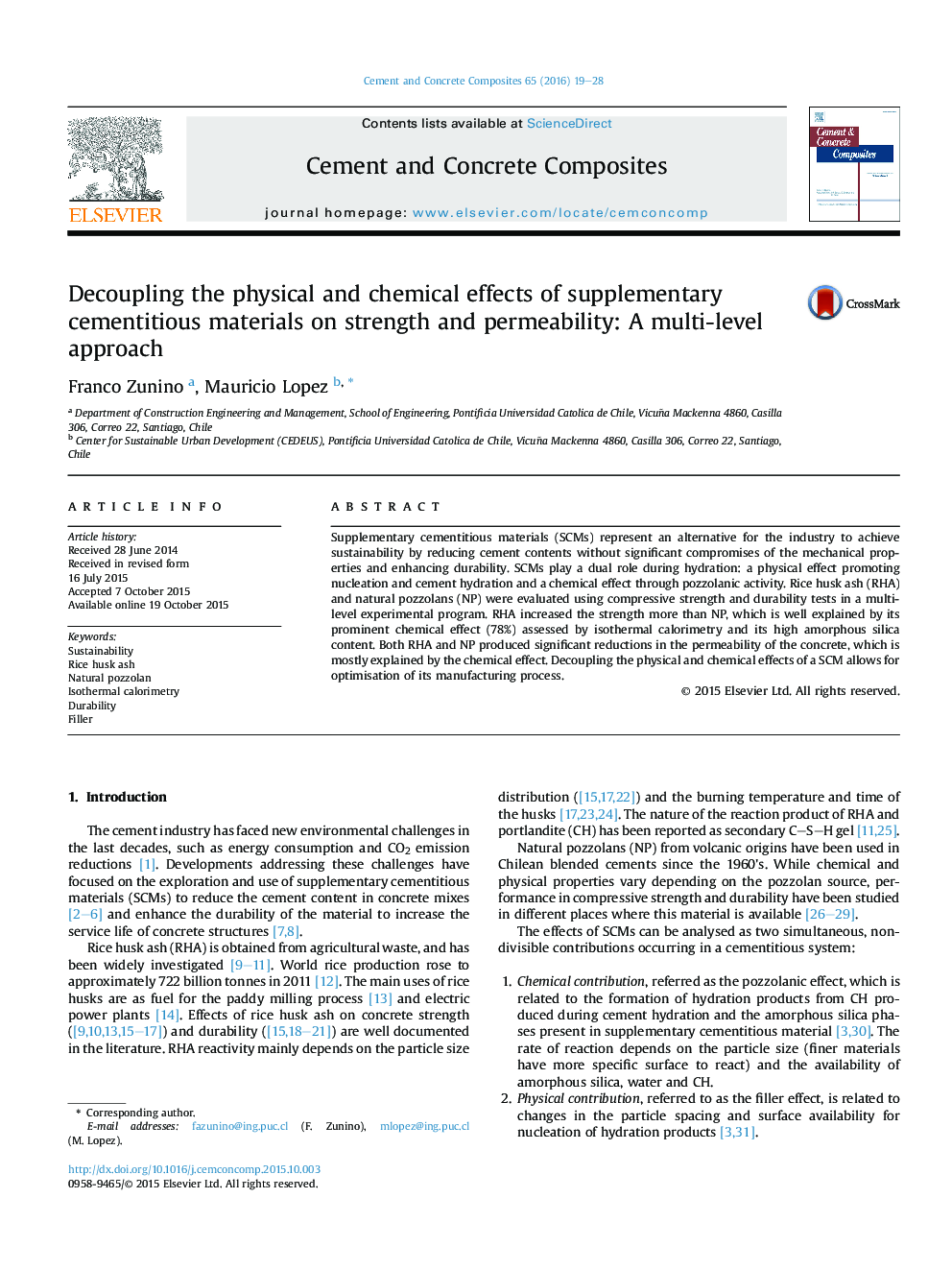| Article ID | Journal | Published Year | Pages | File Type |
|---|---|---|---|---|
| 1454406 | Cement and Concrete Composites | 2016 | 10 Pages |
Supplementary cementitious materials (SCMs) represent an alternative for the industry to achieve sustainability by reducing cement contents without significant compromises of the mechanical properties and enhancing durability. SCMs play a dual role during hydration: a physical effect promoting nucleation and cement hydration and a chemical effect through pozzolanic activity. Rice husk ash (RHA) and natural pozzolans (NP) were evaluated using compressive strength and durability tests in a multi-level experimental program. RHA increased the strength more than NP, which is well explained by its prominent chemical effect (78%) assessed by isothermal calorimetry and its high amorphous silica content. Both RHA and NP produced significant reductions in the permeability of the concrete, which is mostly explained by the chemical effect. Decoupling the physical and chemical effects of a SCM allows for optimisation of its manufacturing process.
